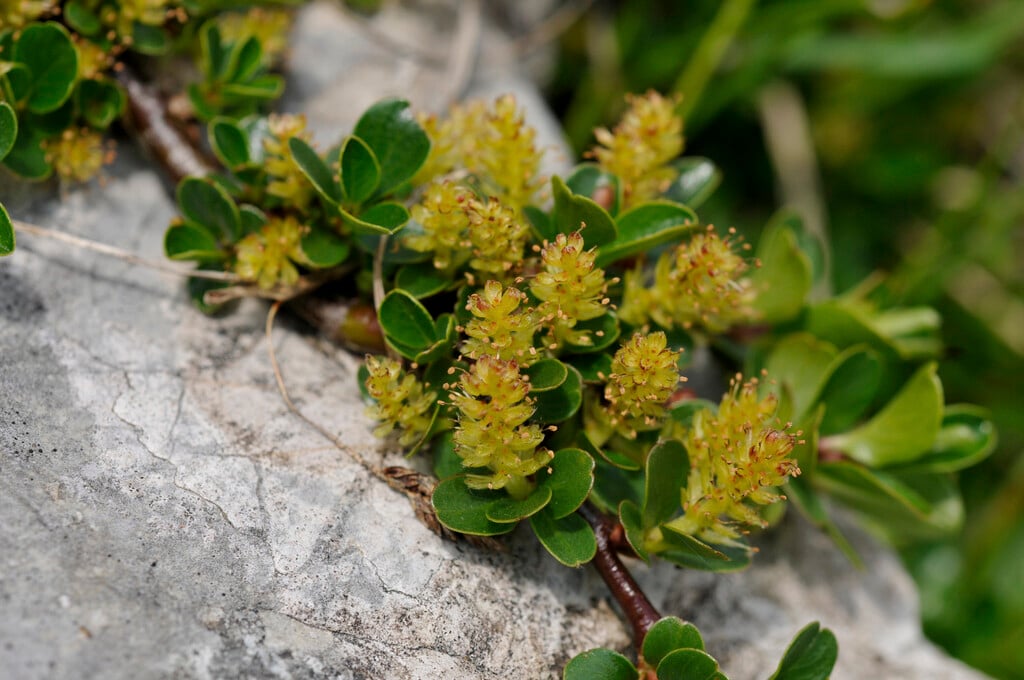Size
Ultimate height
Up to 10cmTime to ultimate height
2–5 yearsUltimate spread
0.1–0.5 metresGrowing conditions
Moisture
Moist but well–drainedpH
Acid, Alkaline, NeutralColour & scent
| Stem | Flower | Foliage | Fruit | |
| Spring | Grey Silver Yellow | Green | ||
|---|---|---|---|---|
| Summer | Green | |||
| Autumn | Green Yellow | |||
| Winter |
Position
- Full sun
Aspect
East–facing or South–facing or West–facing
Exposure
Exposed or Sheltered Hardiness
H7Botanical details
- Family
- Salicaceae
- Native to GB / Ireland
- No
- Foliage
- Deciduous
- Habit
- Matforming, Trailing
- Genus
Salix are deciduous shrubs and trees of diverse habit, with simple leaves and tiny flowers in catkins, male and female usually on separate plants. Some are valued for their brightly coloured winter shoots, others for their foliage or showy male catkins
- Name status
Correct
How to grow
Cultivation
Grow in any deep, moist but well-drained soil in full sun. Avoid shallow chalk soil
Propagation
Propagate by division, by softwood cuttings in early summer or by hardwood cuttings in winter
Suggested planting locations and garden types
- Coastal
- Cottage and informal garden
- Rock garden
- Wildlife gardens
- Banks and slopes
Pruning
Pruning group 1 or 7
Pests
May be susceptible to aphids, caterpillars, willow leaf beetle, sawflies and willow scale insects
Diseases
May be susceptible to willow anthracnose, honey fungus and rust diseases
Get involved
The Royal Horticultural Society is the UK’s leading gardening charity. We aim to enrich everyone’s life through plants, and make the UK a greener and more beautiful place.
